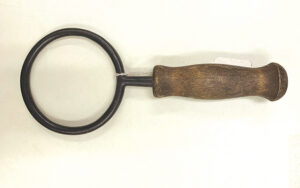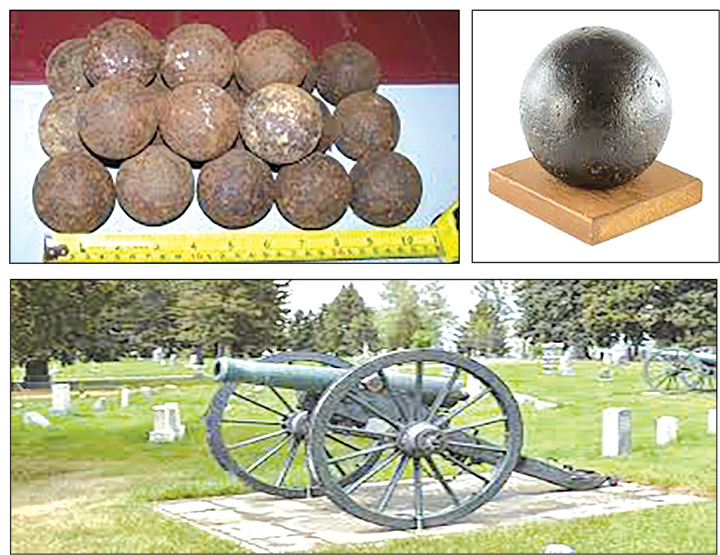
No one correctly identified the October’s What Is It. It was provided by Sue Connelly of Longmont, Colorado. Sue is an avid collector. This item is called a cannonball sizer.
During the American Civil War, cannon balls were huge spheres of iron and steel ~ at least that is what seems apparent when we view the conical stack of eight to ten-inch diameter cannonballs. The assumption that all the cannon, and cannon balls, were large is not true. The fact of the matter was that smaller bore cannon ~ with bores ranging from 3 to 6-inches ~ were far more common during that conflict. And although stacks of cannon balls from the American Revolutionary War are not commonly found anywhere, let alone near the county court house entrance, it will be found that they were most often small, too.
The size-name of the projectile (e.g. 3- pounder or 12-pounder) was signified by the size of the bore diameter of the cannon’s barrel. That size was noted as the caliber in inches. The caliber size, in only a few cases, matched the weight of the solid iron ball shot. (In other words, a cannon with a bore diameter of 3 inches would shoot a slightly smaller iron ball that weighed between 3 and 4 pounds, but a cannon with a bore diameter of 5.29 inches would shoot a ball that weighed 18 pounds.) The size of the cannon came to be referred to in terms of the average weight of the solid ball shot they could fire. A cannon that shot a 3-pound ball was called a 3-pounder, one that shot a 6-pound ball cannon balls positioned beside the bronze statue of the Civil War soldier in the park or beside the front entrance to the county court house. The largest piece of ordnance fabricated during the War Between The States, the Rodman Gun, fired a 450-pound solid ball from the 15-inch bore of its thirteen-feet, nine-inch long barrel. That was called a 6-pounder, and so on. Nearly thirteen different calibers were employed in the guns at the time of the American Revolutionary War.
EDITOR’S NOTE: We did have one more correct guess for our Sept.’s What Is It. Sadly, we didn’t see it before the paper had to go to press. We wanted to be sure to give credit to Terry Cook of Ft. Morgan, Colorado. She identified the Sept. What Is It as a wrought iron spiral courting candlestick. “It was used to time the amount of time allowed to a visiting suitor.” Congratulations, Terry, you have won a year’s subscription to the Mountain States Collector. And, thank you for entering our contest.
















Follow Us